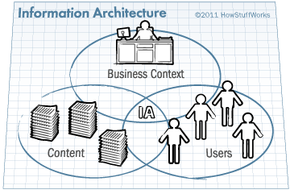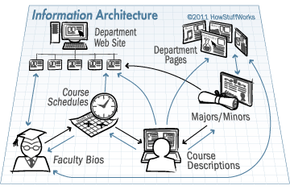Imagine construction workers starting to build a new house with no plan. How do they decide where to put the walls, doors and windows? How can they be sure it will support a roof or have room for all the plumbing and electric wiring? A plan is essential to ensure that the workers construct the building correctly. That plan comes in the form of a blueprint created by an architect.
Now imagine you're opening a clothing store and you need a Web site where you can sell your products. How do you decide what information needs to go on the main page? Where do you put your product catalog or company information on the site, and how will your customers find that information? As when planning a building, a thorough design for your Web site is essential to make sure that all the information you want to convey is accessible and easy for your customers to find.
Advertisement
Planning how to organize information in a Web site is just one application of a broader field known as information architecture (IA). The term "information architecture" has many different descriptions. Since IA is constantly evolving, though, it's hard to pin down an exact definition. By putting together definitions from various sources, information architecture is:
- The model of a system of information describing the rules for how that information should be organized, interlinked, accessed and presented
- The art and science of creating and maintaining such a model
The IA for the growing corporation that we described might be designed just for its Web site -- or it could cover a broad range of corporate information, including marketing materials, customer databases and user documentation.
If this definition sounds a little confusing, think of each piece of information as a pair of shoes. The information system would be an online store containing many shoes for sale. The information architecture would include the sizing system, the colors available, how many pairs are in stock and the price for each pair.
That's a lot for an IA to handle! This article explores the wide range of techniques and technology that fall under the umbrella of information architecture, describes some IA history and concepts, and looks at some of the software and professional culture inspired by IA.
Advertisement







